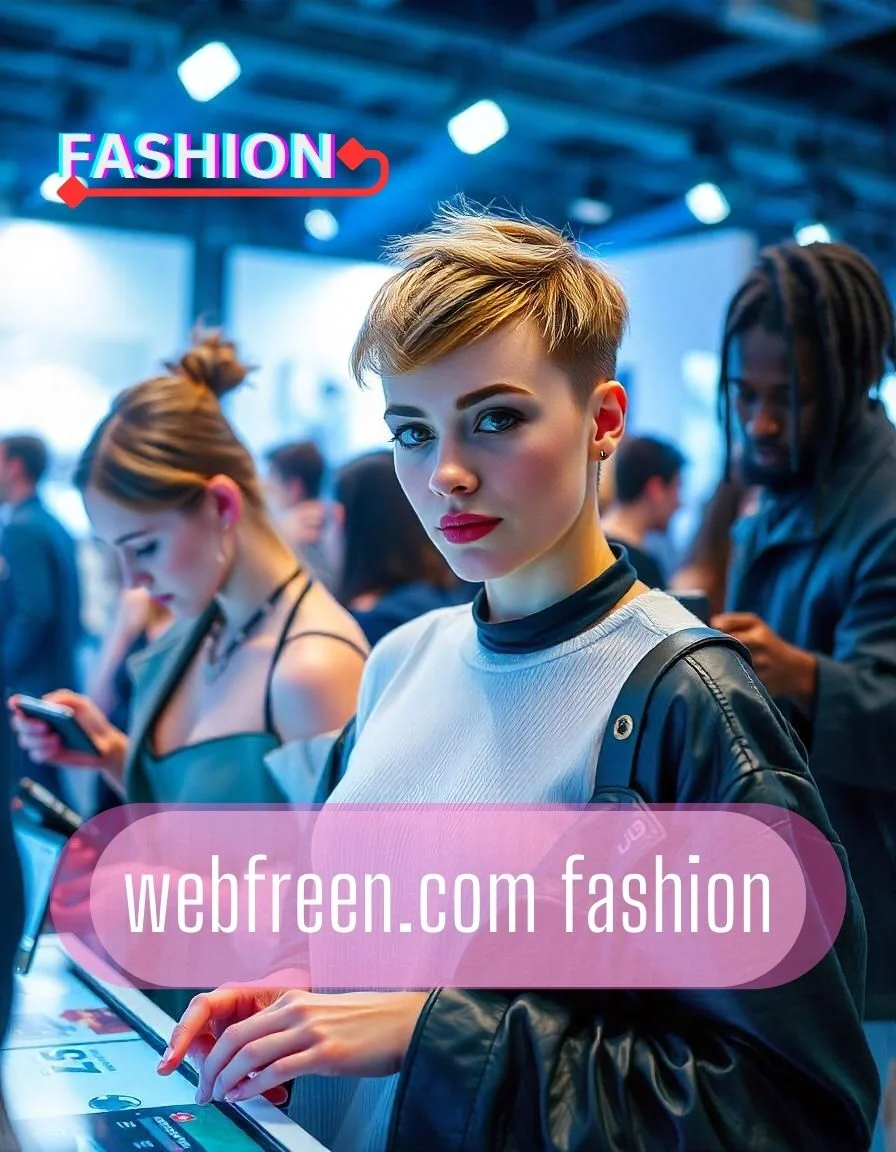In recent years, the fashion industry has experienced a major shift. The rise of slow fashion is a direct response to the harmful impacts of fast fashion, which prioritizes speed and mass production over quality, sustainability, and ethical practices. As consumers become more conscious of their environmental and ethical footprints, slow fashion is gaining momentum, reshaping the industry and how we think about fashion. In this article, we explore the rise of slow fashion, its principles, and how it is changing consumer behavior and the fashion industry as a whole.
What Is the Rise of Slow Fashion?
The rise of slow fashion refers to the growing movement that prioritizes quality, sustainability, and ethical practices in the fashion industry. Unlike fast fashion, which focuses on cheap, disposable clothing that follows rapidly changing trends, slow fashion promotes garments that are made to last, often using traditional craftsmanship and sustainable materials. Slow fashion also emphasizes conscious consumerism, where consumers purchase fewer but higher-quality items that have a lower environmental impact.
At its core, the rise of slow fashion is about making informed choices—choosing clothes that are crafted to last, made ethically, and designed with care. This movement encourages people to think beyond the immediate gratification of buying trendy, low-cost garments and instead focus on the long-term value and impact of their purchases.
For example, Patagonia, a pioneer in sustainable fashion, has made significant strides in promoting eco-friendly clothing by using recycled materials and supporting ethical labor practices. Brands like Stella McCartney have also led the charge, offering timeless, high-quality garments that are made with respect for both the environment and the workers who craft them.
The Impact of Slow Fashion on Consumer Behavior
One of the most notable changes brought about by the rise of slow fashion is its effect on consumer behavior. People are becoming more mindful of how their clothing choices affect the environment, workers, and communities. In a world where convenience and speed have ruled, slow fashion offers a refreshing alternative that encourages customers to slow down and reflect on their purchases.
Choosing Quality Over Quantity
Consumers are now choosing quality over quantity. They are opting for clothing made from sustainable materials, supporting ethical brands, and investing in pieces that can be worn for years rather than months. This shift is not just about reducing consumption but also about fostering a deeper connection with the clothes they wear. As a result, the rise of slow fashion is creating a more thoughtful and conscientious approach to fashion.
Changing Consumer Mindsets
This transformation in purchasing behavior signals a broader cultural change. The demand for ethical fashion is growing as more people want to contribute to a positive environmental and social impact. This shift is indicative of a movement that focuses not only on style but also on the values behind the fashion we wear.
How Brands Are Adapting to Slow Fashion
As the demand for sustainable fashion continues to grow, brands are beginning to adapt to the slow fashion model. Many major fashion houses and smaller boutique brands are embracing slow fashion by adopting more sustainable practices, from using eco-friendly materials to implementing ethical labor practices. These brands are taking responsibility for their environmental impact by reducing waste, cutting down on carbon emissions, and ensuring that their production processes are more sustainable.
Local Production and Sustainability
Local production is also a key component of slow fashion. By sourcing materials locally and producing garments closer to home, brands can reduce transportation emissions and support local economies. This focus on sustainability is becoming more mainstream, as customers increasingly expect companies to prioritize the planet over profits. For instance, brands like Everlane are transparent about their supply chains and production processes, offering fair trade fashion that directly supports workers’ well-being.
Slow Fashion vs. Fast Fashion: The Ultimate Comparison
The rise of slow fashion has sparked an ongoing debate with fast fashion. While fast fashion relies on quick turnarounds, trend-based designs, and low prices, slow fashion emphasizes longevity, quality, and sustainability. Fast fashion brands often produce garments in mass quantities, leading to waste, pollution, and exploitation of labor. In contrast, slow fashion brands focus on creating timeless, durable pieces that don’t contribute to the growing problem of textile waste.
Key Differences Between Slow Fashion and Fast Fashion
Materials: Slow fashion brands use eco-friendly, natural, or upcycled materials that have a lower environmental impact, while fast fashion often uses cheap, synthetic fabrics that contribute to pollution.
Production: Slow fashion focuses on local, ethical production, often in small quantities. Fast fashion, on the other hand, relies on mass production in overseas factories with questionable labor practices.
Lifespan: Slow fashion promotes durable, timeless pieces that can last for years, whereas fast fashion pieces are designed for short-term use and are often discarded after a few wears.
Principles of Slow Fashion
The rise of slow fashion is based on several core principles that guide its philosophy. These principles help create a more ethical, sustainable, and responsible fashion industry. Let’s explore some of the key principles of slow fashion.
1. Quality Over Quantity
Slow fashion promotes buying fewer but better-quality garments. Instead of purchasing large quantities of cheap, mass-produced clothing, consumers are encouraged to invest in pieces that will last. This shift in focus means garments are crafted to withstand wear and tear, making them a more sustainable choice in the long run.
2. Sustainability
Sustainability is at the heart of slow fashion. Brands that embrace slow fashion focus on sourcing eco-friendly materials, reducing waste, and using ethical manufacturing processes. This helps lower the environmental impact of clothing production and ensures that workers are treated fairly.
3. Fair Labor Practices
Slow fashion supports fair labor practices, ensuring that the people who create our clothes are paid fairly and work in safe conditions. This ethical approach contrasts with the often exploitative practices of fast fashion, which has been criticized for low wages and poor working conditions in factories around the world.
4. Transparency
Transparency is another crucial aspect of slow fashion. Brands that prioritize transparency openly share information about their production processes, materials, and labor practices, allowing consumers to make informed decisions about the brands they support. This level of transparency helps build trust and ensures that slow fashion brands are held accountable for their environmental and social impact.
5. Timeless Designs
Slow fashion focuses on timeless designs that transcend trends. By creating clothing that is not tied to fleeting fashion cycles, slow fashion allows consumers to purchase garments that can be worn for years without feeling outdated. This approach reduces waste and promotes a more sustainable relationship with clothing.
The Future of Slow Fashion
The rise of slow fashion is reshaping the future of the fashion industry. As more consumers demand sustainable and ethical products, the influence of slow fashion will continue to grow. This shift is not just about individual consumer choices; it’s also about creating a larger cultural movement that encourages companies to prioritize environmental sustainability, fair labor practices, and long-lasting quality.
The Growing Influence of Sustainable Fashion
As the movement grows, we can expect more fashion brands to adopt slow fashion principles, leading to a significant transformation in how the industry operates. The rise of slow fashion could eventually challenge the dominance of fast fashion, pushing the industry to become more responsible, sustainable, and ethical.
How to Incorporate Slow Fashion into Your Lifestyle
As consumers, we can embrace the rise of slow fashion in several ways. Here are a few practical tips for incorporating slow fashion into your life:
- Invest in Quality Over Quantity: Instead of buying numerous cheap items, focus on purchasing fewer but higher-quality garments that will last longer.
- Support Ethical Brands: Look for brands that prioritize sustainable practices, fair labor, and transparency.
- Buy Second-Hand: Second-hand clothing is a great way to support slow fashion while reducing waste.
- Care for Your Clothes: Taking proper care of your clothes, including regular cleaning and repairs, can extend their lifespan and reduce the need for constant replacements.
- Embrace Timeless Styles: Choose classic designs that won’t go out of fashion quickly. This ensures that your clothes will remain relevant and wearable for years.
Conclusion: The Rise of Slow Fashion and its Lasting Impact
The rise of slow fashion represents a fundamental shift in how we think about clothing and consumption. By focusing on quality, sustainability, and ethics, slow fashion offers a more responsible and conscious alternative to fast fashion. As consumers, we have the power to make a positive impact by supporting slow fashion brands, making mindful purchasing decisions, and embracing a more sustainable approach to clothing.
The future of fashion lies in the hands of consumers who prioritize the environment, ethical labor, and long-lasting quality. The rise of slow fashion is not just a trend—it’s a movement that is changing the fashion industry for the better, one conscious purchase at a time.


